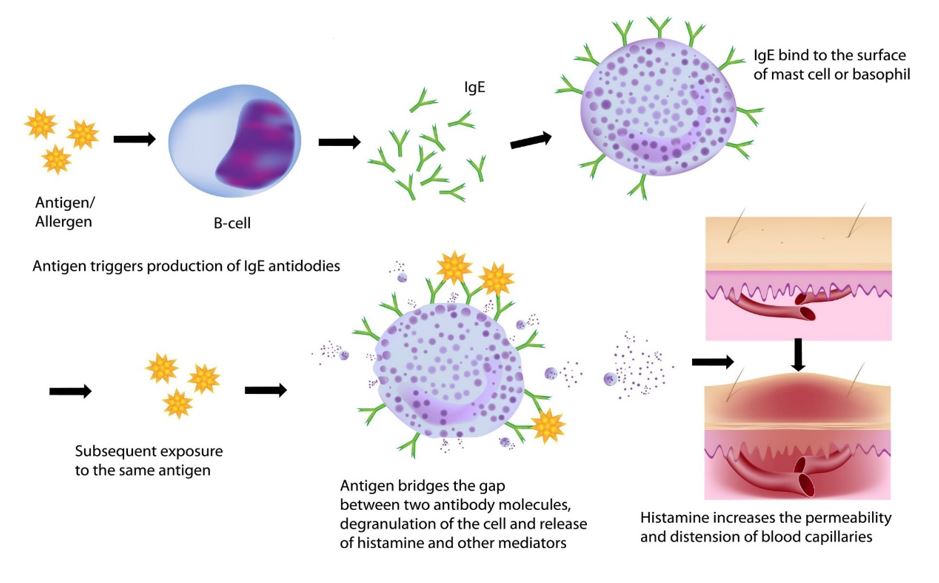Stages of the immune response
1. An allergen, such as pollen, comes into contact with the skin or mucosa.
2. This allergen triggers B-cells to produce IgE antibodies.
3. IgE bind to the surface of mast cells, which are located in areas of the body which frequently come into contact with allergens i.e. in the skin, airways or the gut.
4. The allergen binds to the attached IgE antibodies, causing the mast cells to immediately release stored histamine and other inflammatory messengers.
5. The released inflammatory substances cause swelling of the skin, the production of secretions, itching, hives, or a narrowing of the airways.
Each IgE antibody can be very specific, reacting against certain pollens and other allergens. In other words, a person can be allergic to one type of pollen, but not another. When a susceptible person is exposed to an allergen, the body starts producing a large quantity of similar IgE antibodies. The next exposure to the same allergen may result in an allergic reaction. Symptoms of an allergic reaction will vary depending on the type and amount of allergen encountered and the manner in which the body's immune system reacts to that allergen.
Image source: http://drrajivdesaimd.com/wp-content/uploads/2013/04/allergic-reaction-1.jpg
